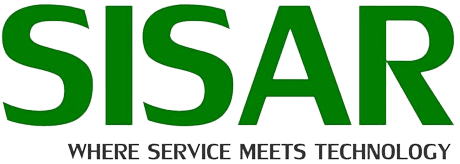Introduction:
The technologies, controls, procedures, and policies that work together to safeguard your cloud-based infrastructure, systems, and data are collectively referred to as cloud security. It falls under the umbrella of information security and computer security.
You and the company that provides your cloud services are both accountable for it. To safeguard your data, comply with legal requirements, and safeguard the privacy of your clients, you establish a cloud security strategy. which in turn shields you from the negative effects of data breaches and data loss on your reputation, finances, and legal standing.
For all businesses, cloud platform security is a crucial requirement. In particular, one in four firms confirmed a cloud security incident in the last 12 months, and the most recent research from (ISC)2 indicates that 93% of organisations are highly or extremely concerned about cloud platform security.
In this piece, we’ll lay out a thorough overview of cloud system security. You’ll learn about the security dangers associated with shifting to the cloud, the need for cloud computing security, and the best practises for cloud ecosystem security. We’ll also go over things like how to evaluate the security of a cloud service provider and find the certifications and training you need to boost your cloud infrastructure security.
Preface to Cloud Computing Security:
Security Planning:
- Before deploying a resource to the cloud, it is necessary to examine numerous features of the resource, including:
- Assess the risk sensitivity of a resource that needs to be migrated to the cloud.
- Consider the cloud service models for IaaS, PaaS, and SaaS. These approaches need users to be in charge of security at varying levels of service.
- Think about using a public, private, shared, or hybrid cloud. Recognize the mechanism the cloud service provider uses to store data and move it in and out of the cloud.
The risk associated with cloud deployment is mostly determined by the service models and cloud types:
Understanding Security of Cloud:
A specific service model establishes the boundary between the obligations of the service provider and the client. The CSA (Cloud Security Alliance) stack model defines the divisions between each service model and illustrates the communication between various functional units.
Understanding Data Security:
Because all data is transported through the Internet, data security is a major issue in the cloud. Some of the most significant data protection measures are listed below.
- Access Control
- Auditing
- Authentication
- Authorization
All service models should have security mechanisms that operate in all these domains.
There is no need for anything particularly unique in terms of cloud data protection solutions. Similar to data protection in a conventional data Centre, data security in the cloud might also exist.
Isolated access to Data:
Access to cloud-based data is global. We require a method to separate data and shield it from client-side access.
Cloud Storage A method for dividing cloud storage is access. This technique results in the production of two services:
- A broker without customer access who has full access to the storage
- A proxy that has access to both the client and the broker but not to storage.
Working on Brokered cloud storage access system:
The following actions are conducted in response to a client request for data access:
- The external service interface of the proxy receives the client’s data request.
- The proxy sends the request to the broker.
- The broker requests the data from the cloud storage system.
- Using the cloud storage system, the broker receives the data back.
- The broker sends the data back to the proxy.
- The data is then proxied to the client.
The following figure depicts all of the preceding steps:
Encryption:
Encryption helps to keep data safe from prying eyes. It safeguards data in transit as well as data saved in the cloud. While encryption protects data from unwanted access, it does not prevent data loss.
Security Risks of Cloud Computing:
The move to the cloud has increased the risks associated with cloud platform security. Increased collaboration, better accessibility, portability, and storage capacity are just a few advantages that cloud computing offers. Various security issues are raised by cloud computing.
The following are some of the most common security risks of cloud computing:
- Data Loss
- Hacked Interfaces and Insecure APIs
- Data Breach
- Vendor lock-in
- Increased complexity strains IT staff
- Spectre & Meltdown
- Denial of Service (DoS) attacks
- Account hijacking
Additional challenges to cloud computing and security:
To gain a full picture, be aware of the following cloud security risks and attacks that can affect both on-premises systems and the cloud.
Cloud Computing threats and risks:
- Reduced Visibility and Control from customers.
- Separation Among Multiple Tenants Fails.
- Data Deletion is Incomplete.
The following advantages of cloud security shield you from risks:
Beyond threat defence and avoiding the repercussions of bad behaviour, cloud security provides advantages that make it necessary for enterprises.
1. Centralized security:
Cloud security centralises defence in the same way that cloud computing centralises Applications and data security. assisting you in enhancing visibility, putting controls in place, and enhancing your defence against threats. Having everything in one location enhances your company continuity and catastrophe recovery.
2. Reduced Cost:
Reputable cloud service providers come equipped with hardware and software that work round-the-clock to protect your data and apps. As a result, you won’t need to make a big financial investment in your own setup
3. Reduced Administration:
A shared responsibility model for security is introduced by moving to the cloud. As a result, the time and resources needed to administer security may be significantly reduced. The security of the storage, computing, networking, and physical infrastructure will be the responsibility of the cloud service provider, as well as yours.
4. Increased Reliability:
A reputable cloud service provider will supply cutting edge hardware and software for cloud security. Your users will be able to safely access data and applications from any location and on any device thanks to the ongoing service that you will have access to.
Summary:
You must be prepared to establish a thorough cloud security strategy as soon as you go to the cloud. Finding the finest cloud service provider or providers is the first step in achieving this.
Next, a strategy using the appropriate tools, processes, rules, and best practices must be put into place. You must prioritize compliance and recognize your joint duty. Your personnel or the staff of your cloud provider is one of the most important and frequently disregarded components of your cloud security protection against cybercriminals.
It’s critical to keep in mind that putting your services on the cloud is just as secure as doing it on-premises. In fact, a lot of cloud service providers give you access to sophisticated security tools and software that you wouldn’t otherwise have.
Regardless of the threats brought on by cloud computing, choosing the correct provider will strengthen your security position and lower your risks.







